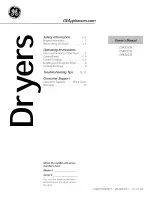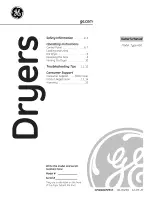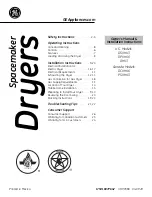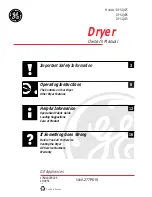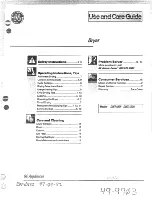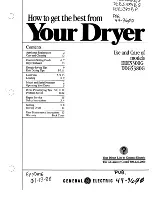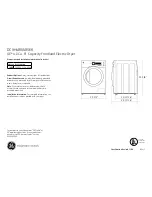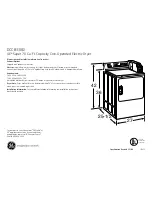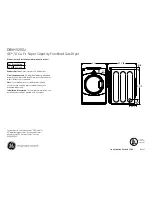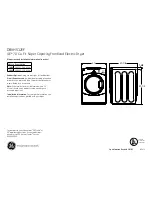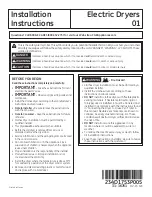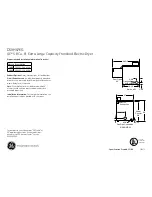
TF2005101-KK-00 English
5
081516Ver1
LP (Liquefied Petroleum Gas)
LP gas is non toxic, odorless and colorless when produced. For your safety, LP gas has been given an odor (similar
to rotten cabbage) so that it can be smelled.
LP gas is highly flammable and may ignite unexpectedly when mixed with air.
LP Tank Filling
Use only licensed and experienced dealers.
LP dealer must purge tanks before filling.
Dealer should NEVER fill LP tank more than 80% of LP tank volume. Volume of propane in tanks will vary by
temperature.
A frosty regulator indicates gas overfill. Immediately close LP tank valve and call LP gas dealer for assistance.
Do not release liquid propane (LP) gas into the atmosphere. This is a hazardous practice.
To remove gas from LP tank, contact an LP dealer or call a local fire department for assistance. Check the telephone
directory under
“GAS Companies” for nearest certified LP dealers.
LP Tank Exchange
Many retailers that sell appliances offer you the option of replacing your empty LP tanks through an exchange service,
use only those reputable exchange companies that inspect, precision fill, test and certify their cylinders. Exchange
your tank only for an OPD safety feature-equipped tanks as described in the
“LP Tank” section of this manual.
Always keep new and exchanged LP tanks in upright position during use, transit or storage.
Leak test new and exchanged LP tanks BEFORE connecting to appliance.
LP Tank Leak Test
For your safety
Leak test must be repeated each time LP tank is exchanged or refilled.
Do not smoke during leak test.
Do not use an open flame to check for gas leaks.
LP tank must be leak checked outdoors in well-ventilated area, away from open flames or sparks.
Use a clean paint brush and 50/50 soap and water solution.
Use mild soap and water. Do not use household cleaning agents.
Damage to gas train components can result.
Brush soapy solution onto all weld seams and entire valve area.
WARNING
If
“growing” bubbles appear, do not use or move the LP tank. Contact an LP gas supplier or your fire department.
Connecting Regulator to the LP Tank
1. Place LP tank on a secure, level, and stable surface.
2. Turn control knob to the OFF position.
3. Turn LP tank OFF by turning OPD hand wheel clockwise to a
full stop
.
4. Remove the protective cap from the LP tank valve. Always use dust cap and strap
supplied with valve.
5. Hold regulator, insert nipple (B) into LP tank valve. Hand
tighten coupling nut, holding regulator in a straight line (C)
with LP tank valve so as not to cross thread the
connection.
6. Turn the coupling nut clockwise to tighten to a full solid
stop. The regulator will seal on the back-check feature in
the LP tank valve, resulting in some resistance. An
additional one-half to three quarters turn is required to complete connection. Tighten by hand only
– do not use tools.
NOTE: If you cannot complete connection, disconnect regulator and repeat step 5 and 6. If you are still unable to complete
the connection,
do not use this regulator!
Do not use a POL transport plug (A) (plastic
part with external threads)! It will defeat the
safety feature of the valve.
















